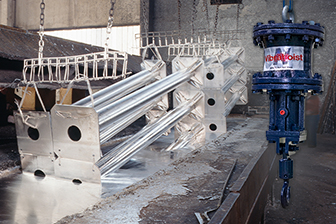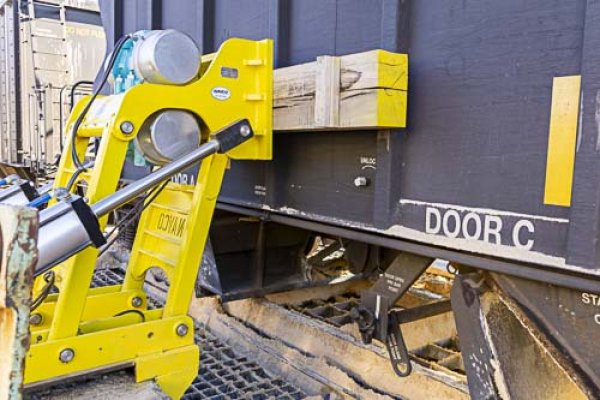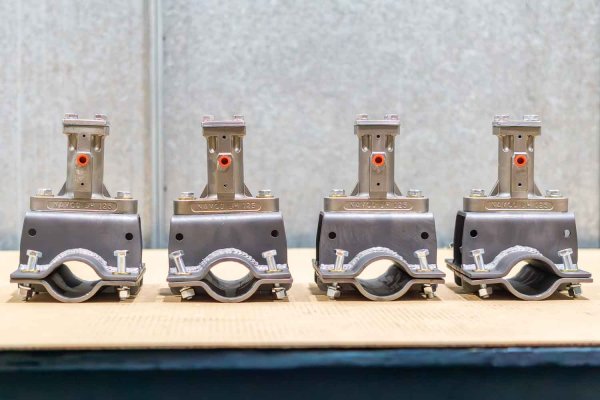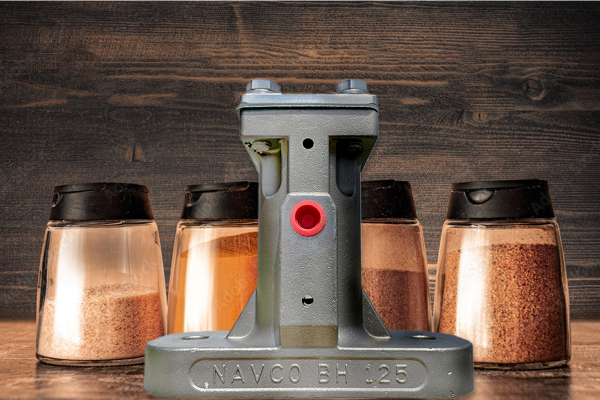Vibrahoist Improves the Hot Dip Galvanizing Process

Galvanizing metal is one of the best ways to ensure a piece of steel is able to provide a long productive working life, even in harsh environments. The hot-dip galvanizing process is the go to method for galvanizing a wide variety of products. Through working with galvanizing facilities over the years, NAVCO developed the Vibrahoist to help improve the hot-dip galvanizing process. In this article we will cover what exactly galvanizing is, the steps in the hot-dip galvanizing process, and how the Vibrahoist uses vibration to improve multiple steps in the process.
What is galvanizing?
Galvanizing is the process of dipping fabricated steel into a kettle or vat containing molten zinc. While the steel is in the kettle, the iron in the steel metallurgically reacts with the molten zinc to form a tightly-bonded alloy coating that provides corrosion protection to the steel.
How is Hot-Dip Galvanizing Performed?
Hot-dip galvanizing (HDG) is a multi-step process that takes a piece of steel from its raw state to a corrosion resistant state ready to be put to work in hard industrial environments. The HDG process is broken into three steps, Surface Preparation, Galvanizing, and Inspection.
Surface Preparation
Before the piece of steel can be placed in the molten zinc it must first pass through three surface preparation areas with a rinsing in between each. First, the metal is dipped into a degreasing tank where any dirt, oil, and other residues are removed. It is rinsed and then dipped in a pickling tank where an acidic bath removes mill scale and iron oxide. The metal is rinsed again and then dipped into a flux solution. This removes any remaining oxides and adds a protective layer to keep the metal from oxidizing. The metal is then laid out to dry before moving to the next step.
Galvanizing
Once the metal’s surface has been prepped and dried it is ready to be galvanized. The metal is lowered into a kettle of molten zinc at an angle to allow air to escape and the zinc to entirely cover the piece of metal. While in the kettle the metal and the molten zinc react and form a series of zinc-iron intermetallic layers and an outer layer of pure zinc, galvanizing the metal.
Inspection
The metal is then removed from the kettle and inspected once safe to do so. This includes a visual inspection as the zinc will not react with un-clean steel, which will then be easily spotted. Magnetic thickness gauges are also used to verify the thickness of the coating to ensure the required specifications have been met.
How does the Vibrahoist help improve the Hot-Dip Galvanizing process?
As we have just reviewed, the hot-dip galvanizing process involves the lifting and lowering of the metals into and out of various tanks and kettles. The Vibrahoist is a pneumatic or electric vibrating system that is designed to be incorporated between the hoist and the material. Its purpose is to add vibration in various parts of the process to help improve the final galvanized product while isolating the hoist and supporting structure from the vibration. The addition of the vibration is beneficial in several steps throughout the process:
Surface Preparation:
- During the pickling process, the Vibrahoist’s vibration provides a mild agitation to the steel parts while it is submerged in the tank. The vibration creates turbulence around the part, improving cleaning and accelerating the removal of mill scale and iron oxide.
- Vibration agitation also ensures the cleaning process reaches spots on the metal that would otherwise be hidden, this includes the suspension point on the load as well as creating space between steel parts that have been lowered in baskets.
Galvanizing:
The Vibrahoist helps improve the galvanizing portion of the process in a few different ways.
- During the kettle dip, the turbulence created by the vibration reduces the necessary cook time. This allows for more metal to be galvanized in any set amount of time when compared to dipping without a Vibrahoist.
- Vibration improves coating finish by promoting uniformity and eliminating bare spots between parts.
- As the metal is lifted out of the kettle the Vibrahoist is run to encourage excess zinc to fall back into the kettle. This decreases the amount of drip on the metal reducing the additional labor necessary to remove it during the inspection/cleanup process.
Dross Removal from Kettle
- Vibration is used on the spoon after it has scooped up the dross from the bottom of the kettle. The vibration encourages any free zinc to fall back into the kettle.
The NAVCO Vibrahoist improves product and lowers cost in the hot-dip galvanizing process. Contact NAVCO today for help improving your hot-dip galvanizing processes.
Looking for comprehensive Galvanizing Solutions?
NAVCO partners with Western Technology who provide extensive experience and expertise in the fields of plant design and engineering, plant operations and management, and process chemistry and metallurgy.




